
Special Article - Cosmetics
Austin J Dermatolog. 2017; 4(1): 1071.
Beauty and Health in the Ancient City of Teotihuacan: Skin and Its Aesthetic and Therapeutic Treatments
Vázquez de Ágredos Pascual ML¹* and Manzanilla L²
¹Art History Department, Universidad de Valencia, Spain
²Universidad Nacional Autónoma de México, Mexico City
*Corresponding author: Vázquez de Ágredos Pascual ML, Art History Department, Universidad de Valencia, Spain, Avenida Blasco Ibáñez 28, 46022 Valencia, Spain
Received: April 26, 2017; Accepted: May 12, 2017; Published: May 29, 2017
Abstract
The body colors recently discovered in the ancient Mesoamerican city of Teotihuacan were analyzed by Light Microscopy (LM), Scanning Electron Microscopy-X-Ray Microanalysis (SEM-EDX), FTIR Spectroscopy (FTIR) and Gas Chromatography-Mass Spectrometry (GC-MS). The first results obtained show us complex formulations, which mixed mineral colors with organic substances of aromatic properties. These mixtures and others, also identified in this study, described these products as body colors that were used not only for beauty, but also for health. Moreover, the recipes identified allow us to establish an interesting relationship between the science and art to prepare ancient body colors in this Pre-Columbian city and the techniques that were employed for the same purposes in other ancient civilizations, such as Greece, Rome or Egypt, among others.
Keywords: Body colors; Fragrance; Teotihuacan; Antiquity; Toxicity and therapeutic properties
Abbreviations
LM: Light Microscopy; SEM-EDX: Scanning Electron Microscopy-X-Ray Microanalysis; FTIR: FTIR Spectroscopy; GCMS: Gas Chromatography-Mass Spectrometry; cm: centimeter; eV: electrovoltio; kV: kilovolt; min: Minutes; mL: a Milliliter; mm: Millimeter; nm: Nanometer; s: Second; μL: a Milliliter Cubic; NO: Nitrogen Monoxide; AD: Christian Era; BC before the Christian Era
The City of Teotihuacan and Its Neighborhoods
The metropolis may have been divided into four districts by the north-south Street of the Dead and the East and West Avenues, portraying the basic quadripartite characteristic of the Central Mexican capitals [1,2] (Figure 1). These divisions would have articulated the city’s main administrative structure, as well as the diversity of the population. And from these districts may have emerged the participants in the co-rulership of the Teotihuacan state, one dimension of its corporate organization [3].
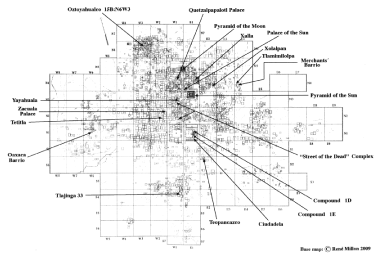
Figure 1: Teotihuacan Millon’s map (1973).
In each district were different neighborhoods, which constituted the dynamic social units of Teotihuacan society. These neighborhoods had coordination centers, probably headed and managed by the intermediate elite, an entrepreneurial class who competed to bring to the city the most exotic and unusual ornaments and garments for public display [4,5]. We have counted around twenty-two such centers in the city, each surrounded by numerous apartment compounds [6]. At the Teopancazco neighborhood center, we see evidence of foreign goods mainly from Guerrero, Veracruz, Tlaxcala, Hidalgo, and central-southern Puebla. Other neighborhood centers may have had similar products and materials imported from Michoacán and elsewhere.
The ethnic enclaves of people coming from Oaxaca (Tlailotlacan), Michoacán, and Veracruz (Mezquititla and Xocotitla) were situated around the city’s core, each one maintaining its original identity through distinctive funerary rituals, symbolic items, and foreign goods. The Oaxaca Barrio and the three concentrations of Oaxaca people that Verónica Ortega has proposed were settled along the Western Avenue of Teotihuacan, all together suggesting that Oaxaqueños were the most numerous foreign group in the metropolis [7,8].
The neighborhood centers, such as Teopancazco (from which the samples described in this article come from) have different functional areas: ritual, administrative, military, craft production, medical, and food storage and preparation [4] (Figure 2). The ritual plazas of neighborhood centers are much larger than ritual courtyards in apartment compounds (greater than 170 square meters) and stand near the center of the compound. A larger temple is the main ritual building (its precinct is more than 55 square meters in surface) and is generally located in the eastern fringe of the ritual courtyard [4]. Large craft production sectors are found, and few traces of domestic activities are seen. Kitchens to feed the workers are aligned on the periphery, contrary to what is seen in apartment compounds, where the kitchen forms part of each apartment [4]. Larger neighborhood or district centers such as La Ventilla may have whole compounds dedicated to each function: ritual, administrative, or craft production, for instance [9].
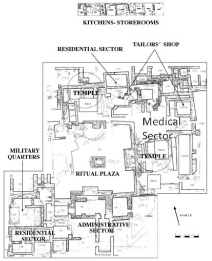
Figure 2: The Teopancazco Neighborhood Center.
For Teopancazco, the main craft activity was the manufacturing of garments and headdresses such as the one displayed in the famous mural painting at the site [10]; other crafts in evidence were the manufacture of nets and baskets, and the painting of pottery [4]. Burials of important adolescents at Teopancazco were accompanied by flower-shaped seals and miniature ceramic vessels containing odorous resins, mixtures of pigments (such as cinnabar, jarosite, hematite, and galena) with carbon or mica [11,12]. These individuals may have been painted to resemble jaguars, with the seals and gray galena used to create the effect of the jaguar’s spots. A similar pattern was detected by SigvaldLinné in the Xolalpan compound [13].
Most craft specialists at Teopancazco came from places along the main trade route and corridor to Nautla, on the Gulf Coast of Veracruz, perhaps explaining the presence of marine fauna in the compound [10]. Their migratory status was identified through strontium and oxygen isotopes, and their diversity was expressed in their genetic haplogroups [5].
Beauty and Skin Hygiene in Antiquity: Perfumed Products for Dermatological Application
The transition towards civilized societies brought with it the development of medical knowledge. With this medical knowledge, the use of aromas in rituals and other contexts was based on criteria that were much more deliberate and precise. In these hallowed settings, aromas achieved a triple purpose that was at once magical and sacred, hygienic and medicinal, and cosmetic. Sumerians, Akkadians, Babylonians, Assyrians, Persians and other civilizations that later occupied the ancient cultural area of Mesopotamia, as well as Egyptians, Greeks, Etruscans and Romans, have left us substantial visual and written evidence to support this argument.
The earliest references on this topic originate from the Sumerian city of Umma (present day Djokha), which developed strongly during the Third Dynasty of Ur (ca. 2100-2000 BC). These references are short texts written in cuneiform script that describe aromatic substances used as incense in the worshipping of specific deities as well as other substances that were used to make fragrances for the same purpose, which explains the use in those texts of expressions such as “the perfume of Ninurta’ [14].
The main locations for these first “artificial’ perfumes (i.e. perfumes that resulted from specific and complex preparation processes described in the next section) were temples. This shows that their main purpose was a magical/religious one because they were used in all manner of rituals, including funerary. However, they also had a cosmetic purpose, since they were also used to anoint and beautify the statues of gods and goddesses and the bodies of kings, queens, men and women [15]. Many components of these early perfumes were also used in Sumerian medicine. One of the best examples of this medicinal use is found in ancient Middle Eastern societies, which used poppy (Papaver somniferum) drying oil to obtain a pleasant essence that also served to sedate users during their much soughtafter deep trances for rituals and medicine (Figure 3). Evidence that these societies were aware of this use and indeed used this essence for both of these purposes has been found in Mesopotamia dating back to at least 3,000 BC [16].
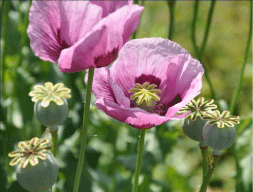
Figure 3: The Papaver somniferum flower.
The above-mentioned facts therefore corroborate, at the beginning of civilization, the dual aromatic/medicinal aspect of fragrances in ritual contexts that (as reported earlier) was already present since the Upper Palaeolithic and that, in association with the chromatic aspect, remained constant throughout antiquity, with clear repercussions in both the Middle Ages and the modern era.
Egypt adopted, systematized and extended ancient Mesopotamian knowledge on the production and use of fragrances and this was inseparably linked to the ritual, medicinal and cosmetic contexts. The same situation occurred in ancient Greece, Etruria and Rome [17-23], thereby establishing a continuum that began in Sumer and continues today with our most avant-garde molecular medicine [24].
As we describe in our next sections on Mexico, this continuum runs in parallel with what we are able to identify on this topic regarding the cultures of the Far East and Mesoamerica. However, what technology was behind the preparation of these early, sacred perfumed products?
Numerous cuneiform texts describe this early technology. First, fragrances had to be extracted from flowers, roots, seeds, barks and leaves using maceration and pressing techniques (Figure 4). The fragrances were then precipitated in the presence of a proteintype (fat) or polysaccharide-type (oil, gum, resin or gum-resin) aromatic excipient. Finally, a third, alcoholic ingredient was added to dissolve the fragrances that had been obtained by maceration or pressing: initially, beer was used but this was later alternated with and eventually replaced by wine in Middle Eastern, Aegean and Egyptian cultures [14]. Both cold and hot maceration were more widely used than pressing, at least in Sumer kingdoms such as the kingdom of Larsa, since they ensured that the end product was of better quality [25].
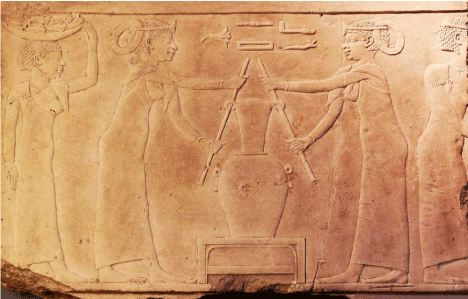
Figure 4: Making fragrances in ancient Egypt.
The texts referred to above speak of “specialist workshops’ (e2 i3-ra2-ra2) where perfumers (i-ra-ra in Sumerian and raqqû in Akkadian) would create ancient aromatic ointments from local and imported aromatic products, including sacred cedar (eren or erenu in Sumerian and Akkadian, respectively) from Syria or southern Anatolia [25], whose wood, resin and essential oils were highly sought after thanks to their intense aromas and healing properties.
While cold maceration, hot maceration and pressing were still the most common extraction techniques used, the Egyptians added a further technique, known as enfleurage, which gained widespread acceptance among the cultures of the Aegean. This technique, which involved extracting essential oils and perfumes from flowers via the progressive and cold saturation of animal and vegetable fats, guaranteed a high level of corporeity in the final product, strongly enhancing the preparation of perfumed ointments [26]. Meanwhile, the formula still comprised three main ingredients: fragrant essences, aromatic excipients, and an alcoholic component to facilitate distillation. Flower petals, roots, seeds, barks and leaves provided the essences; animal fats, gums, gum-resins, resins and oils provided the excipient; and wine was the preferred ingredient for the alcoholic component. However, the formula also contained two interesting novelties: the regular incorporation of astringent substances and salt, the former to attach the fragrant essence to the aromatic excipient more strongly and the latter to ensure better conservation [20]. The unctuous texture of the perfumes also made it advisable to occasionally add another important final component - colour - so that the perfumes imprinted not only their fragrance but also a certain tonality when they were applied to the body.
In ancient times the sacred perceptions attached to each of these components (fragrant essence, colour, excipient, astringent product and salt) largely depended on their respective vegetal, animal or mineral origins. The choices made were always based on technical or cultural knowledge. Technical knowledge involved assessing the suitability of employing substances depending on their physical and chemical properties (e.g. composition, malleability and melting point). Cultural knowledge involved assessing the cultural significance of these substances within the context of the worldview at their place of origin. Not surprisingly, therefore, in antiquity methodological knowledge and control of the entire perfume-making process resided in the temples. Revealing archaeological, iconographic and epigraphic evidence has been found, for example, at the Laboratory of the Temple of Horus in Edfu (Egypt) from the time of the Ptolemaic or Macedonian kings [20] (Figure 5).

Figure 5: Detail of a mural painting showing Erotes as perfumers, from the
Triclinium of the Vetti house in Pompeii.
Religion also played a leading role in the procurement, preparation and use of the sacred aromas that archaeometric techniques are beginning to identify in ritual contexts in pre-Hispanic Mexico. In the Maya region, traces of incenses, poultices and perfumed ointments have been found ranging from the Preclassic period to the Postclassic period. These traces enable a preliminary evaluation of the products and techniques that one thousand years ago led to the preparation in Mayan culture of aromatic ointments whose compositions and triple functionality (magical/ritual, hygienic/medicinal and cosmetic) were similar to those described in the ancient cultures of the eastern and western Mediterranean.
Body Fragrances with Therapeutic Properties in Ancient Mesoamerica: Evidence from Teotihuacan
Materials and Methods
a) Materials
The body colors considered in this research appears in the Table 1. In all cases, the number of the archaeological samples corresponds to the bag number for pigments balls or miniature vessels were body colors were deposited.
Body colors
Samples: bag number for miniature vessels or pigment-balls samples
Description
Yellows
75679, 74498, 77568, 78165, 68899, 66523, 70204, 66386, 72090, 72537, 69064, 65218
Pigment balls
Greyishblack
(1) 76689, 76681, 75610, 79058, 76688
(2) 76111
(1) Offerings inside miniature recipients
(2) Seal
Black
75621
Offering inside a miniature recipient
Red
(1) 76955, 75511, 78200, 75868, 75443, 23985, 76861, 71695, 73144, 76421, 76683, 76687, 75616, 76107, 75608, 76105, 75613, 76682 A, 76682 B, 75607
(2) 79256, 68884, 79059, 66666, 67188, 68056, 65193, 66155
(1) Pigment balls, seals and offerings in miniature ceramic recipients
(b) Offering inside a miniature recipient
Whites
79056, 79057
Offering inside a miniature recipient
Orange
79257
Offering inside a miniature recipient
Table 1: Materials considered in this research.
b) Methods
Light Microscopy. A stereoscopic light microscope Leica GZ6 (X10-X50) was used for selecting the samples to be analyzed and a polarized light microscope Leica DM2500 P (Leica Microsystems. Heidelberg, Germany) was used for morphological and petrographic examination of the minerals. Leica Digital FireWire Camera (DFC) with Leica Application Suite (LAS) software has been used for acquiring and processing the digital images. Samples were prepared by softly grinding a few micrograms of the pigmenting materials in a small agate mortar and then extended them on a slide and protected with a thin cover slide. Mounting medium was not used.
Scanning Electron Microscopy-X-Ray Microanalysis. Chemical composition of the minerals was obtained using a Jeol JSM 6300 scanning electron microscope operating with a Link- Oxford-Isis X-ray microanalysis system. The analytical conditions were: 20 kV accelerating voltage, 2x10-9A beam current and 15mm as working distance. Samples were carbon coated to eliminate charging effects. Quantitative microanalysis was carried out using the ZAF method for correcting interelemental effects. The counting time was 100 s for major and minor elements. The standards used were the following minerals: Albite (Na), MgO (Mg), Al2O3 (Al), Quartz (Si), GaP (P), FeS2 (S), MAD-10 feldspar (K), Fe (Fe), Mn (Mn), wollastonite (Ca), Ti (Ti), PbF2 (Pb), Zr (Zr), Cr (Cr), Ni (Ni), V (V), Cu (Cu), Ag (Ag), Hg (HgTe), Ba (BaF2). Element percentages were generated by ZAF software on the Oxford-Link-Isis EDX. Average chemical composition of the samples consisting of several microcrystalline mineral phases corresponds to the mean value obtained from triplicate quantitative measurements from an area of the powdered sample at ca. 100mm2. In parallel, quantitative spot measurements on the surface of individual grains and aggregates provided the chemical composition of the different mineralogical phases contained in the sample. Precision of measurements is given by the standard deviation. Detection limit for the studied elements was 0.01%. Clay standards were used for checking SEM-EDX measurements.
FTIR Spectroscopy
The IR spectra in the ATR mode of the powdered samples were obtained using a Vertex 70 Fourier-transform infrared spectrometer with a FR-DTGS (fast recovery deuterated triglycine sulfate) temperature-stabilized coated detector and a MKII Golden Gate Attenuated Total Reflectance (ATR) accessory. A total of 32 scans were collected at a resolution of 4 cm-1 and the spectra were processed using the OPUS/IR software.
Gas Chromatography-Mass Spectrometry
An Agilent 5973N mass spectrometer coupled to an Agilent 6890N gas chromatograph (Agilent Instruments, USA) was used for identifying the organic materials present in some of the samples. Agilent Chemstation software (MSD) was used for the integration of peaks and for the mass spectra evaluation. GC separation was achieved in a chemically bonded fused-silica capillary column HP-5-MS (Agilent, USA), (stationary phase 5% phenyl-95% methylpolysiloxane, 30m x 0.25mm i.d., 0.25μm film thickness). Two methods of derivatization have been applied:
(a) Direct silylation: Resinous material in samples 7, 10, 11 and 15 was selected mechanically with the help of a scalpel under the optical microscope (0.1mg) and grinded in an agate mortar. Then, the sample is treated directly with 6μL of TMSI and 3μL of TMCS under N2 atmosphere at 80°C for 15 min. The excess of derivatization reagent is eliminated by adding 100μL of water and the derivatives are extracted with 50μL of chloroform. After shaking the mixture by ultrasons for 15 min, a 1.5μL aliquot of the organic phase is injected for GC analysis. The chromatographic conditions were: temperature initial of the gas chromatograph 100°C. Oven temperature was programmed with a gradient of 20°C min-1 up to 295°C held for 12 min. The carrier gas was He with inlet pressure of 99.89 kPa and 1:20 split ratio. The electronic pressure control was set to constant flow mode (1.3μL min-1) with vacuum compensation. Ions were generated by electron ionisation (70 eV) in the ionisation chamber of the mass spectrometer. The mass spectrometer was scanned from m/z 20e800, with a cycle time of 1 s.
(b) Methanolysis silylation: for the methanolysis and trimethylsilylation the powdered samples are taken up in 0.5μL of a methanolic HCl solution prepared by adding acetyl chloride (100μL) to 3.75mL of methanol. Methanolysis is conducted at 60°C for 24 h (80°C for the last 30 min) to facilitate the conversion of monosaccharides into pyranosides. Then, methanol is removed using a nitrogen stream and the residue is treated as in the previous methodology (direct silylation). The chromatographic conditions were: split mode (1:20 split ratio) for injection of the sample and oven program consisting of 100°C for 2 min and then at 6°C min-1 up to 300°C for 5 min. Gas flow was set to constant mode at 1.3μL min-1. Mass spectrometer conditions were the same as for the direct silylation procedure.
Results and Discussion
In Teopancazco, body colours were of mineral origin (Table 2). The main minerals were: hematite and its derived earths (Figures 6a-6d), and cinnabar for the warm range of colours (Figures 7a-7d); calcite, white clays and diatomaceous earths (Bacillariophyta) for whites (Figures 8a-8d); galena and charcoal for greyish blacks (Figures 9a-9d); manganese oxide for black; and, except for certain ochre earths, jarosite for yellow (Figures 10a-10d). The first three aspects to identify from these results are: (1) there was an abundant and frequent use of iron colours in ancient and contemporary cosmetics due to their hiding power and non-harmful contact with the skin; (2) minerals such as galena and (partly) jarosite were present that in other ancient cultures had a fundamentally cosmetic use; and (3) around thirty formulas were collected in the fifty samples of body colours so far analysed in Teopancazco that originated from the same chromatic minerals. The following three aspects should also be mentioned: (4) organic substances related to these minerals were present in many samples, mainly in the iron colours (hematite, red earths and ochre earths); (5) these organic components were aromatic in nature, thus indicating that the product was intended for corporal, aesthetic and ritual use, and combined colour and fragrance; and (6) many of these formulas had a hygienic and/or medicinal function thanks to one or more of their components, which indicates that the colours intended for corporal application also often comprised aromatic and medicinal properties.
Colour
Reference
Description
Yellows
(a) 75679, 74498, 77568, 78165
(b) 68899, 66523, 70204, 66386
(c) 72090, 72537
(d) 69064
(e) 65218
(a) Pigment balls
(b) Pigment balls
(c) Pigment balls
(d) Pigment ball
(e) Pigment ball
PHYSICAL-CHEMICAL COMPOSITION: COMPONENTS AND FORMULAS
(*) Single component jarosite, KFe2(SO4)2(OH)6: 77568
(*) Main component jarosite, KFe2(SO4)2(OH)6: 66523,72090, 72537, 69064, 70204, 65218, 75679, 74498, 78165
(*) Complex formulas with jarosite: (a) jarosite + cinnabar + haematite + mica (66523, 72090, 72537); (b) jarosite + cinnabar+ goethite + mica + pine resin + chia oil (69064); (c) jarosite + goethite + mica (70204); (d) jarosite + goethite + haematite + mica (65218); (e) jarosite + mica + chia oil (75679); (f) jarosite + haematite + limonite + mica (74498, 78165)
(*) Main component limonite, (Fe2O3.nH2O): 68899, 66386
(*) Complex formulas with limonite: (a) limonite + mica + pine resin (68899, 66386)
Greyish black
(a) 76689, 76681, 75610, 79058, 76688
(b) 76111
(a) Offerings inside miniature recipients
(b) Seal
PHYSICAL-CHEMICAL COMPOSITION: COMPONENTS AND FORMULAS
(*) Main component galena, PbS: 76689, 76681,75610,76111,79058, 76688
(*) Complex formulas with galena (a) galena + halloysite (76689); (b) galena + charcoal (76681, 75610, 76111, 79058); (c) galena + coal + mica (76688)
Black
(a) 75621
(a) Offering inside a miniature recipient
PHYSICAL-CHEMICAL COMPOSITION: COMPONENTS AND FORMULAS
(*) Single component manganese oxide, MnO: 75621
Red
(a) 76955, 75511, 78200, 75868, 75443, 23985, 76861, 71695, 73144, 76421, 76683, 76687, 75616, 76107, 75608, 76105, 75613, 76682 A, 76682 B, 75607
(b) 79256
(c) 68884
(d) 79059, 66666, 67188
(e) 68056
(f) 65193
(g) 66155
(a) Pigment balls, seals and offerings in miniature ceramic recipients
(b) Offering inside a miniature recipient
(c) Offering inside a miniature recipient
(d) Offering inside a miniature recipient
(e) Offering inside a miniature recipient
(f) Offering inside a miniature recipient
(g) Offering inside a miniature recipient
PHYSICAL-CHEMICAL COMPOSITION: COMPONENTS AND FORMULAS
(*) Main component cinnabar, HgS: 71695, 76955, 75511, 78200, 68884, 76682A
(*) Single component haematite, Fe2O3: 67188
(*) Main component haematite, Fe2O3:79256, 79059, 67188, 66666, 65193, 66155
(*) Main component goethite, FeOOH: 75868, 75443, 23985, 68056, 76861
(*) Main component other red earths (n.i.) 3144, 76421, 76683, 76687, 75616, 76107, 75608, 76105, 75613, 76682B, 75607
(*) Complex formulas with cinnabar: (a) cinnabar + calcite + pine resin + chia oil (71695); (b) cinnabar + goethite + pine resin (76955); (c) cinnabar + limonite + chia oil (75511); (d) cinnabar + goethite + chia oil (78200); (e) cinnabar + haematite (68884); (f) cinnabar + haematite + halloysite (76682A)
(*) Complex formulas with haematite: (a) haematite + halloysite (79256); (b) haematite + calcite (79059); (c) haematite + coal + mica (66666, 65193); haematite + bone char? + mica (66155)
(*) Complex formulas with goethite: (a) goethite + pine resin + mica (75868); (b) goethite + haematite + mica + pine resin + chia oil (75443, 23985, 68056); (b) goethite + haematite + pine resin + mica (76861)
Whites
(a) 79056, 79057
(a) Offering inside a miniature recipient
PHYSICAL-CHEMICAL COMPOSITION: COMPONENTS AND FORMULAS
(*) Single compound diatomaceous earths (Bacillaryophyta): 79056
(*) Main compounds calcite CaCO3: 79057
(*) Complex formulas with calcite (a) calcite + illite-type clays: 79057
Orange
(a) 79257
(a) Offering inside a miniature recipient
Physical-chemical composition:
(*) Main compounds haematite (Fe2O3) and ilmenite (FeTiO3): 79257
(*) Complex formulas with haematite (a) haematite + ilmenite + quartz: 79257
Table 2: The body pigments found at Teopancazco, Teotihuacan.
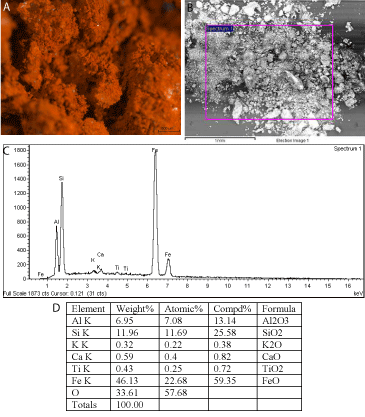
Figure 6: (6a-d) Red earth in sample 75616, seen by LM (6a), SEM (6b-d).
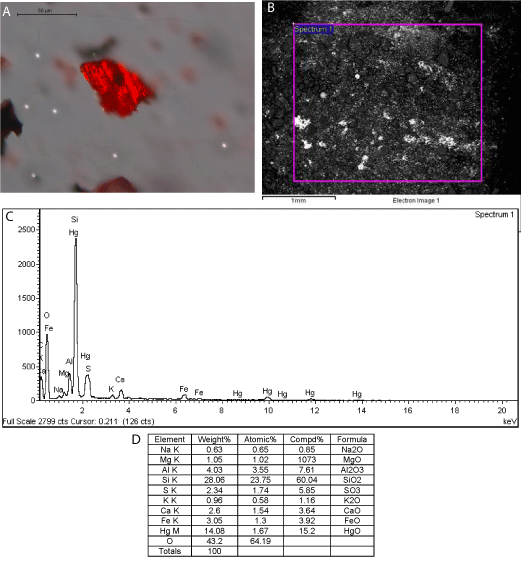
Figure 7: (7a-d) Cinnabar mixed with hematite in sample 68884, seen by LM
(7a), SEM (7b-d).
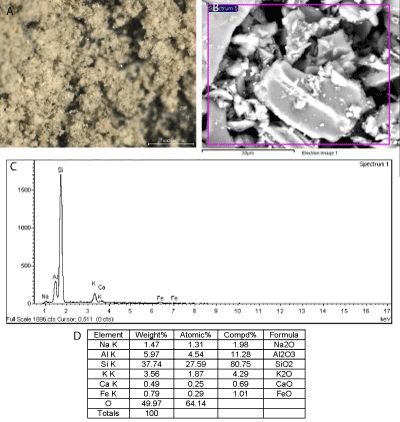
Figure 8: (8a-d) the body color white identified as kaolin in sample, seen by
LM (8a), SEM (8b-d).
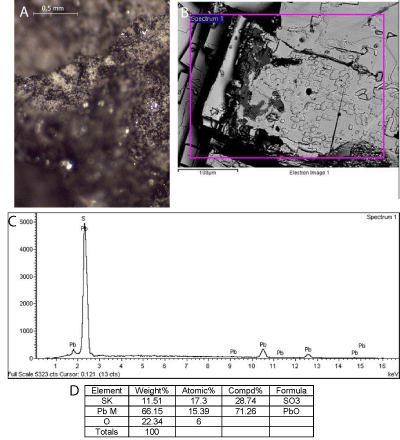
Figure 9: (9a-d) Galena in sample 79058, seen by LM (9a), SEM (9b-d).
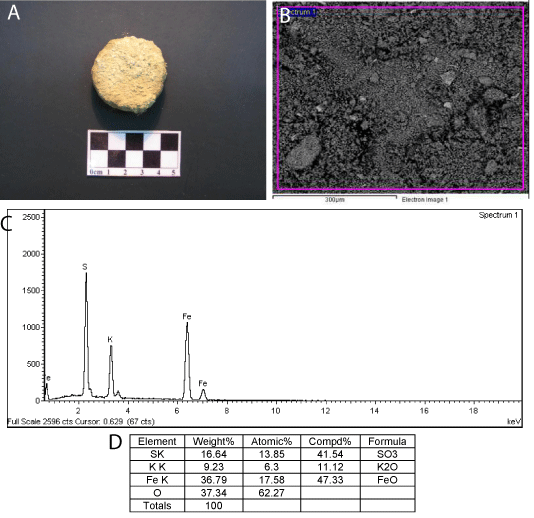
Figure 10: (10a-d) the archaeological body color (10a) identified as jarosita
in sample 78165, seen as SEM-EDX (7b-d).
The carbon in the blacks and greyish blacks of galena would have helped to minimise the harmful effects of lead in contact with the skin [27]. The hematite and red earths, on the other hand, would have had the same effect on the mercury component of the corporal pigments manufactured from cinnabar [28]. In the formulation of reds and blacks, therefore, we find formulas that point to a healthier and even therapeutic use for these body colours. The diatomaceous earths and clays which were used to make the white body colours found at Teopancazco were also intended for hygienic or medicinal use thanks to their bactericidal (diatomaceous earth) and moisturizing (clays) properties. Clays were used for bathing purposes in many early civilizations, including the pre-Columbian [29]. Another way to reduce the toxicity of mercury and lead in contact with the skin was to formulate body pigments in which cinnabar and galena were mixed with clays such as the halloysite we identified in our sample, since the exchange of ions between clay silicates in combination with these heavy metals favours the partial absorption of the latter in the former [30]. What kind of specialist prepared these body colours? Specialists would have been responsible for controlling the art of colour and medicine. This is normal especially if we consider that throughout history pigments and colorings have served both of these arts indistinctly.
The presence of aromatic organic substances with medicinal properties found in many body pigments at Teopancazco (69064, 75679, 68899, 66386, 71695, 76955, 75511, 78200, 75868, 75443, 23985, 68056, and 76861) also helped us to reach this conclusion. The two aromatic excipients so far identified are pine resin (Pinus montezumae) and chia oil (Salvia hispanica L.) - usually observed alone but occasionally observed in combination (75443, 23985, 68056) - which enhanced the dissolution of the resin in the oil, thereby improving malleability and facilitating the application onto the skin of the colour/aromatic substance (Figure 11). The presence of chia oil in several body pigments found at Teopancazco may be a sign of identity linked to the Teotihuacan population that inhabited the area, since chia and chia oil originated in the Central Mexican Plateau. Moreover, as is demonstrated by the large quantities of chia seeds found in the main courtyard at Teopancazco and the only mural that exists there, chia appears to have played an important role in the sacred ceremonies that were held in this inner-city neighborhood [4].
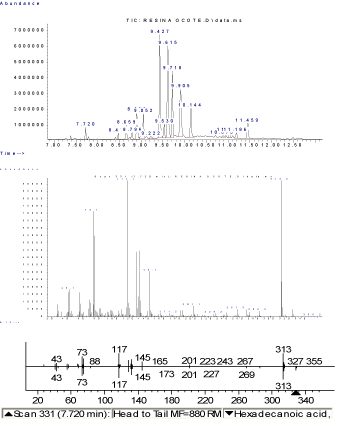
Figure 11: The ocoteresina that served to mix and aromatized somebody
colors discovered at Teopancazco, Teotihuacan, by GC-MS.
Finally, other compounds that were common in the formulas of the body pigments found at Teopancazco were quartz and especially mica. Regardless of their colour saturation index, these would have added brightness to the body colour. Moreover, this finding establishes a continuum among the pictorial arts of Teotihuacan. Whether via the gloss of the pictorial layer (as in the case of the mural painting) or the use of lubricating (clays) or reflective (e.g. mica, pyrite, galena) raw materials, there existed a taste for applying and perceiving colour in its brightest shades. The samples of body pigments at Teopancazco that have been analysed in this paper provide a reference for this subject.
Conclusions
Teotihuacan, a very large urban development of Classic times, was a multiethnic metropolis housing people from Michoacán, Guerrero, Oaxaca, Puebla, Tlaxcala, Hidalgo, Veracruz and probably Chiapas. These people came to the city in search of for better living conditions. The competitive organizations of the intermediate elite heading the neighborhood centers promoted the embedding of these foreign craftsmen and craftswomen into the neighborhood social tissue. The presence of cosmetics and corporal paints is part of this large network of relations. It was intended to individuate people coming from a particular neighborhood in a vast multiethnic environment. Attires, headdresses, and corporal paints were indexical means to understand who is who in Teotihuacan.On the other hand, the scientific results obtained show us that (1) the body colors identified in Teopancazco were prepared with coloring material of mineral nature; (2) in some cases, such as mercury or lead, these pigments were mixed with substances to reduce in them the toxicity; (3) in other cases, especially with red body colors manufactured with iron pigments, these aesthetic-medicinal products were mixed with aromatic substances; (4) and, in this last sense, the preparation of body colors in Teopancazco follow recipes used in other ancient cultures, such us Egypt or Greece.
References
- Manzanilla L. Teotihuacan: Urban Archetype, Cosmic Model. Manzanilla L, editor. In: Emergence and Change in Early Urban Societies. Plenum Press. 1997; 109-132.
- Manzanilla L. La iconografía del poder en Teotihuacan. Olivier G, editor. In: Símbolos de poder en Mesoamérica. Instituto de Investigaciones Históricas (Serie Culturas Mesoamericanas 5) - Instituto de Investigaciones Antropológicas, Universidad Nacional Autónoma de México. 2008; 111-131.
- Manzanilla L. Corporate life in apartment and barrio compounds at Teotihuacan, Central Mexico: craft specialization, hierarchy and ethnicity. Manzanilla L, Chapdelaine Cl, editors. In: Domestic Life in Prehispanic Capitals. A Study of Specialization, Hierarchy and Ethnicity. Memoirs of the Museum of Anthropology 46, Studies in Latin American Ethno history and Archaeology VII. Ann Arbor: University of Michigan. 2009; 21-42.
- Manzanilla L. Introducción. Teopancazco, un centro de barrio multiétnico de Teotihuacan. In: Estudios arqueométricos del centro de barrio de Teopancazco en Teotihuacan. Manzanilla L, editor. In: Coordinación de Humanidades-Coordinación de la Investigación Científica, Universidad Nacional Autónoma de México. 2012; 17-66.
- Manzanilla L. Cooperation and Tensions in Multiethnic Corporate Societies using Teotihuacan, Central Mexico as a Case Study. Proceedings of the National Academy of Sciences. 2015; 112: 9210-9215.
- Froese T, Gershenson C, Manzanilla LR. Can government be self-organized? A mathematical model of the collective social organization of ancient Teotihuacan, Central Mexico. PLOS ONE. 2014; 9.
- Froese T, Gershenson C, Manzanilla LR. Can government be self-organized? A mathematical model of the collective social organization of ancient Teotihuacan, Central Mexico. PLOS ONE. 2014; 9.
- Ortega Cabrera V. La presencia oaxaqueña en Teotihuacán durante el Clásico [dissertation]. Universidad Nacional Autónoma de Mèxico Thesis. 2014.
- Gómez Chávez S. Structure and Organization of Neighborhoods in the Ancient City of Teotihuacan. Charlotte Arnauld M, Linda R, Manzanilla, Michael E, Smith, editors. In: The Neighborhood as a Social and Spatial Unit in Mesoamerican Cities. The University of Arizona Press. 2012; 74-101.
- Manzanilla L. Sistemas de control de mano de obra y del intercambio de bienes suntuarios en el corredor teotihuacano hacia la costa del Golfo en el Clásico. Anales de Antropología. 2011; 45: 9-32.
- Doménech MT, Vázquez de Ágredos ML, Osete-Cortina L, Doménech A, Guasch-Ferré N, Manzanilla L, et al. Characterization of Pre-Hispanic Cosmetics Found in a Burial of the Ancient City of Teotihuacan (Mexico). Journal of Archaeological Science. 2012; 39: 1043-1069.
- Vázquez de Ágredos Pascual ML, Manzanilla L, Vidal Lorenzo C. Antiguas esencias aromáticas y cosméticos funerarios del barrio multiétnico de Teopancazco (Teotihuacan, México). Manzanilla L, editor. In: Estudios arqueométricos del centro de barrio de Teopancazco en Teotihuacan. Coordinación de Humanidades-Coordinación de la Investigación Científica, Universidad Nacional Autónoma de México. 2012; 211-232.
- Linné S. Archaeological Researches at Teotihuacan, Mexico. Stockholm: Ethnographical Museum of Sweden. 1934: 160-161.
- Henry L. Phamacopée et parfumerie sumériennes. Revue d´histoire de la pharmacie. 1978; 66: 147-159.
- Rovesti P. Alla ricerca dei cosmetici perduti, Venezia: Blow-up di Marsilio Editori. 1975: 20-24.
- Teall E. Medicine and Doctoring in Ancient Mesopotamia. Grand Valley Journal of History. 2013; 3: 1-8.
- Faure P. Parfums et aromates de l´Antiquité, París: Fayard. 1987.
- Manniche L. Sacred Luxuries. Fragance, Aromateraphy and Cosmetics in Ancient Egypt. New York: Cornell University Press. 1999.
- Giannelli L. Antica cosmeci mediterranea. Montespertoli: M.I.R Edizioni. 2000.
- Bourliascos A. Des Senteurs d’Eternite: Les Methodes d’Identification des Parfums Antiques [dissertation]. Ecole du Louvre Thesis. 2004; 12.
- Giordano C, Casale A. Perfumes, unguents and hairstyles in Pompeii. Rome: Bardi Editore. 2007.
- Squillace G. Il profumo nel mondo antico, Firenze: Olschki. 2010.
- Carannante A, D´Acunto M. (Eds.) I profumi nelle società antiche, Paestum: Pandemos Edizioni. 2010.
- Colapinto L, Annetta A. Il progresso terapeutico. Dalla tavoletta sumera alla medicina molecolare. Sansepolcro: Edizioni Aboca Museum. 2008.
- Middeke-Conlin R.T he Scents of Larsa: A Study of the Aromatics Industry in an Old Babylonian Kingdom. Cuneiform Digital Library Journal. 2014; 1: 2-53.
- Maderna E. Aromi sacri. Fragranze profane. Sansepolcro: Aboca Edizioni. 2009.
- Fussler Bagur E. Rituels et intoxication au plomb chez l’adulte [dissertation]. Université Paris VI Thesis, 2011.
- Liu J, Jing-Zheng S, Li-Mei Y, Goyer A, Waalkes M. Mercury in Traditional Medicines: Is Cinnabar Toxicologically Similar to Common Mercurial? Experimental Biology and Medicine. 2008; 233: 810-817.
- Franch A, Ciudad Ruíz A, Iglesias J. El “temazcal’ en Mesoamérica: evolución, forma y función. Revista Española de Antropología Americana. 1982; 10: 93-132.
- Rytwo G. Clay Minerals as an Ancient Nanotechnology: Historical Uses of Clay Organic Interactions, and Future Possible Perspectives. MACLA: Revista de la Sociedad Española de Mineralogía. 2008; 9: 15-17.